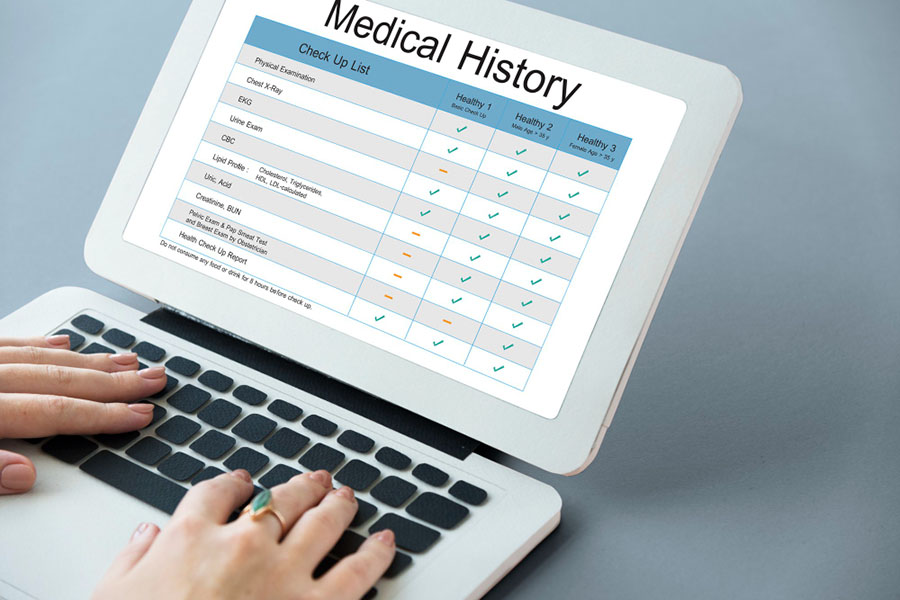Healthcare organizations often face claim denials that impact their revenue cycle and overall operations. To ensure compliance with regulations and financial stability, you must implement denial management tactics and solutions that address the most common denial reasons. One commonly occurring issue we’ve noticed healthcare facilities struggle with is the dreaded medical necessity denial.
That’s why we’ll elaborate on the meaning of such denials, their common reasons, and the best ways to prevent them from reoccurring. Continue reading to discover the best solutions and how to implement them!
Medical Necessity Denial Code
Payers use denial codes to describe and elaborate on the reasons why the services you’ve billed for don’t meet the criteria for reimbursement. As the name implies, the code occurs when your claim has been denied because the insurance company has deemed that the services provided weren’t a medical necessity.
If your claim has been denied due to this issue, you’ll receive a CO50 denial code as an explanation. The full description of this specific code is that there are non-covered services because they’re not deemed a medical necessity by the payer.
Medical Necessity Denial Meaning
A denial for “medical necessity” means the insurance company determined the treatment was non-essential for the patient’s condition, resulting in the claim not being paid.
Furthermore, it’s important to understand their meaning and devise the right denial management tactics to prevent a disruption in the revenue cycle and financial instability. That being said, insurance payers focus on several factors when determining a medical necessity, including the following:
- Coverage policies: Since there are different insurance companies you can work with, it’s important to remember that they each have unique policies regarding medical necessities. This includes various services, procedures, and treatments, ranging from preventative care to complex medical operations.
- Patient-specific factors: To determine a medical necessity, insurance payers must also consider the patient’s medical history, symptoms, diagnosis, and treatment goals. This ensures that your services are appropriate for their condition and circumstances.
- Evidence-based medicine: Insurance companies often rely on scientific evidence regarding the efficacy, safety, and cost-effectiveness of your services when assessing your claims. Thus, determining the medical necessity is also based on reviewing clinical studies, trials, and systematic reviews as evidence supporting the treatment in question.

Source: freepik.com / Photo Contributor: rawpixel.com
Medical Necessity Denial Reasons
After elaborating on the meaning behind medical denial codes, we want to uncover some of the common reasons they may occur. Even though the reasons may differ from one insurance payer to another, the factors that have the biggest influence are the following:
- Insufficient documentation: Missing documentation to support the medical necessity of your services is one of the main reasons for such denials. This can include incomplete paperwork regarding the patient’s symptoms and diagnosis, missing clinical indicators, and inadequate justification of the treatments, which can be viewed as a lack of supporting evidence.
- Coding errors: Using inaccurate procedures or diagnosis codes during the billing process is another common reason for medical necessity denials. Such errors can lead to discrepancies between the billed services and medical records, so the claims won’t align with the documented medical necessity.
- Inappropriate level of care: Occurs when the insurance payer deems that the services you’ve provided are more invasive than what is medically appropriate for the patient’s condition. For example, if the services could be safely and effectively delivered in an outpatient setting, you may get a denial if you’ve admitted the patient as an inpatient.
How to Fix Medical Necessity Denials
So, what can you do to fix and prevent denial of medical necessity? The best way to determine which tactics to implement within your daily operations is to review and identify the most common reasons behind your denials.
Remember that each healthcare organization chooses which solutions to implement based on their circumstances and needs. Hence, some of the best ways to address and fix the denial of medical necessity include the following strategies:
- Documentation improvement
- Coding accuracy
- Clinical reviews and appeals
- Collaboration with payers
- Training and education
Documentation improvement
The first solution you should know is documentation improvement. When treating patients at your healthcare facility, documenting all the necessary diagnostics, testing, and treatment is of utmost importance. This also includes detailed medical records that comprehensively reflect the patient’s condition.
If you have any previous denials caused by inaccurate documentation, we recommend reviewing them to determine any recurring documentation issues. This will allow you to identify potential improvement areas and further optimize your documentation process. Moreover, reviewing your notes, reports, test results, and treatment plans will uncover the patient’s full medical history and key elements required to support the claim.
If you notice any documentation deficiencies, it’s important to update your medical records with the latest information. This may include up-to-date patient and insurance information, additional clinical documentation, and other supporting documentation from reliable sources.
Furthermore, if you notice that the original claim lacks sufficient paperwork, you can always submit further documentation regarding test results, medical notes, and treatment plans to support the medical necessity of the services performed. You can also implement standardized templates to help your healthcare providers capture all the essential information.
Coding accuracy
To prevent billing errors, you should improve your coding accuracy. While many healthcare organizations find this process the most challenging, there are several ways to improve it.
First, we want to emphasize the importance of accurate coding in the overall claim submission process. Medical organizations and government bodies implement these standardized codes to unify the description of specific diagnoses and procedures.
Thus, your healthcare organization must use the appropriate codes to describe the services you’ve offered so they align with the claim for which you’re billing. It’s best to provide regular training and education to your coding team to improve your coding accuracy.
This way, they’ll be up-to-date with the latest coding changes and will have access to various coding resources, such as payer guidelines and coding manuals. Remember that insurance companies often specify the required codes within their coverage policies and clinical guidelines, so it’s best to familiarize yourself with them as soon as possible.
Furthermore, you can use various software tools to get a better overview of the coding process. These tools help conduct internal audits and implement quality assurance programs. This allows you to identify potential errors and verify the coding accuracy before submitting the claim.

Source: freepik.com / Photo Contributor: jannoon028
Clinical review and appeals
Another solution revolves around clinical reviews and appeals. To better understand these processes, we’ll elaborate on each separately.
Implementing clinical reviews
If you want to avoid medical necessity denials, the best way to determine if the treatment is right for the patient’s circumstances is through a clinical review or predetermination process. In simple terms, it acts as a medical necessity review before any services are provided.
In most cases, the responsible healthcare provider, such as a physician or nurse, examines the necessary medical documentation and coding to ensure the treatment plan meets the payer’s coverage criteria. Doing so will allow you to assess whether the claims are accurate, complete, and properly justified, preventing potential claim denials. The main steps and objectives of such clinical reviews are the following:
- Gathering required documentation
- Reviewing clinical details to ensure documentation accuracy
- Verifying coding accuracy
- Checking compliance with payers’ insurance policies and coverage guidelines
- Identifying discrepancies and correcting errors
Submitting claim appeals
Continuously tracking and monitoring your claim submissions is essential for your healthcare operations. Thus, if you’re already met with a denial of medical necessity, it’s best to focus on a timely appeal. Claim appeals act as formal requests to the insurance payers to reconsider their denial.
To successfully reverse their decision, it’s important to present any additional information you may have regarding the claim and clarify the reasons behind the appeal. Similar to the clinical reviews, the appeal process is made of the following steps:
- Reviewing the denial
- Gathering necessary documentation
- Preparing an appeal letter that outlines the medically necessary and clinical justifications
- Submitting the appeal within the given deadline
- Tracking and monitoring the appeal for any additional requests
- Receiving the decision
To ensure a positive outcome, you should always be as thorough and clear about why the denial should be reconsidered while providing necessary documentation and evidence. Plus, you should familiarize yourself with the appeal process details, such as the payers’ specified timeframes and specific requirements.
Collaboration with payers
The denial management process requires frequent communication with insurance companies to determine the best ways to address the denials. So, one of the main solutions for a medical necessity denial is collaboration with payers. Establishing a strong relationship with insurance companies will help clarify their payer requirements and build a mutual understanding to potentially prevent future denials.
Even though building such a relationship doesn’t happen overnight, continuous and positive communication is key to mutual respect and collaboration. That’s why we encourage you to view such denials as a shared problem that can be solved collectively rather than a conflict.
The first thing you should focus on when collaborating with payers is determining a clear communication channel. This way, you can quickly address any issues and conduct regular meetings to discuss policy updates and requirement changes. However, always review their policies and guidelines beforehand to ensure a productive collaboration.
Next, you should focus on early engagement with the payers when pre-authorizations or pre-certifications are needed for the services you’re about to offer. This can be done through various electronic systems to automate and streamline the process.
Training and education
The last solution you should implement is providing sufficient training and education for your billing and coding employees. As mentioned, continuous staff improvement is key to optimizing your operations and ensuring proper claim submission. Implementing regular training sessions or interactive workshops will keep both you and your providers updated on current payer requirements and best practices.
You can also use online educational resources so the staff can stay informed about any recent changes or access training modules to enhance their skills further. While it may sound inconvenient at first, such training and education can lead to multiple benefits, including the following:
- Improved documentation practices
- Better understanding of payer requirements
- More efficient coding
- Streamlined pre-authorization process
- Better compliance with regulatory and legal standards
- Faster and more effective appeal processes

Source: freepik.com / Photo Contributor: peoplecreations
Conclusion
After discovering some of the best solutions for a medical necessity denial, remember that you should always continue to monitor and improve your denial management process. Failing to identify and address such issues successfully will impact your business operations in the long run, resulting in revenue loss and financial instability.
Since you’re well aware that many new healthcare organizations struggle with optimizing their workflows, our team at CLICKVISION BPO offers tailored medical billing services designed to meet the diverse needs of both healthcare and insurance industries.
So, contact us today and discover how to streamline your process optimization and reach undeniable business success!

With a strong background in the marketing industry and healthcare leadership roles, Filip is responsible for CLICKVISIONBPO’s sales strategies and onboarding new clients. With a passion for sharing insights gained from his experience, he also shares valuable knowledge through industry related articles.
